The day after his arrival in Cordoba, the duke and his courtiers went to attend Mass in the Cathedral. In his chronicle, the Marquis of Magalotti refers to this building under its Christian name of Our Lady of the Assumption, but noting that it is the old mosque of the Arabs.
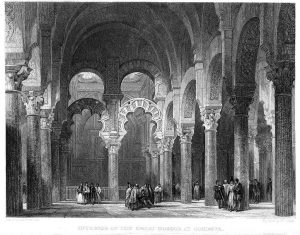
In describing the shape and arrangement of the arches, everybody has praiseworthy words for the coffered ceiling, which was still very well preserved, stating, as it was then thought, that it had been carved in cedar wood. More accurate, however, had been our Ambrosio de Morales to say, a century before, that the wood paneled was larch, a type of pine brought from Barbary, and so delicate, that when they dismantled some parts during the work of the cruise of the cathedral, they were sold at a high price to manufacture musical instruments, such as lutes and vihuelas.
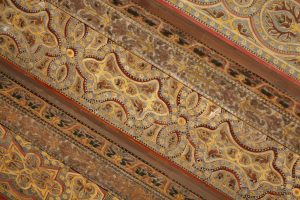
Naturally, the duke and his courtiers showed a great interest in the area of the maxura, with its wonderful dome, and the mihrab, with its shell-shaped cover, in one piece. Unfortunately, the aesthetic sense of the Florentines, exclusively linked to the classic taste (today we would call it ethnocentric), prevented them from enjoying the beautiful atauriques that decorate the panels on both sides of the mihrab, about which Magalotti does not hesitate to affirm that they are sculpted “in the worst way.” On the contrary, the chronicler was able to imagine the aesthetic intentionality of the original space of the mosque, where from any point through the forest of columns the entire length of the building could be appreciated.
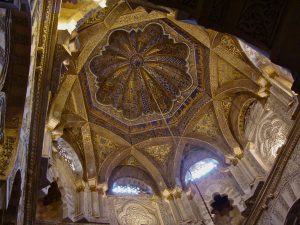
The main altar, which at that time still housed the paintings by Cristóbal Vela, impressed them with the majesty of its architecture. It is curious, however, that when referring to a separate chapel, “called Sagrario, where the Blessed Sacrament is kept”, they do not make any mention of the frescoes with which his compatriot Cesare Arbasia had enriched it a century before, nor of the grotesques, not very different from those that crowed the palace of the Signoria, that cover there the venerable horseshoe arches.
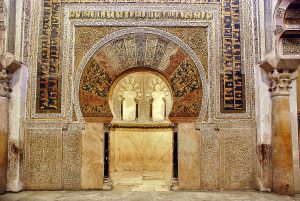
On the contrary, they were impressed by the legend, clearly false, of the crucifix engraved in a column by the nail of a Christian who, tied to it, awaited his martyrdom. Although Magalotti casts a shadow of doubt on the story, his mere mention is sufficiently revealing of the prince’s devout inclinations.
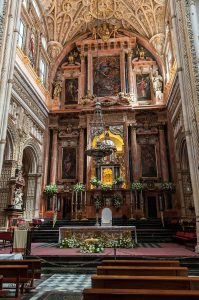
In the treasury of the cathedral, all their admiration was reserved for the custody of Arfe, that wonderful work of goldsmithing, in every respect comparable to that of Toledo which they had contemplated before.
Finally, it is remarkable the enthusiasm they felt about the musical performance during the mass. The Marquis of Corsini noted that the Chapel of Music of the Cathedral of Cordoba had the reputation of being the best in Spain and that the Chapter spent 12,000 escudos a year, a phrase that causes us an enormous nostalgia for that past that now costs us so much to imagine.
